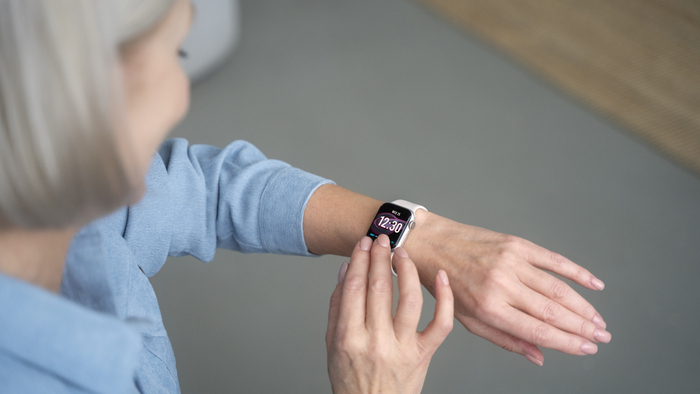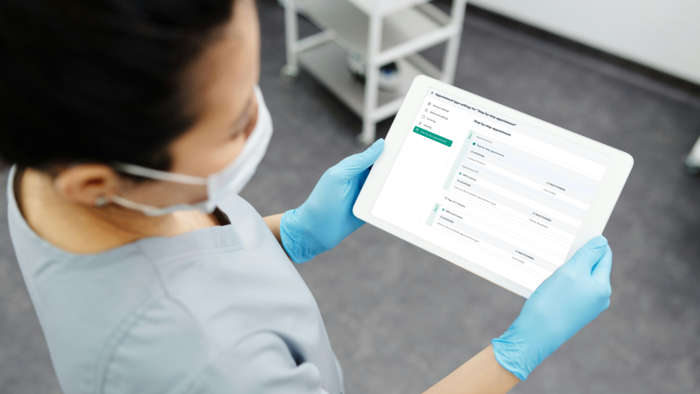Features
Revolutionize the health monitoring of your patient with smartwatches!
Published on 12/08/2024

Smartwatches have become much more than just fashion accessories, they now offer a multitude of functionalities that can be used to take medical measurements. But are they good enough compared to professional devices, and can you use them as a healthcare professional? Let’s find out in this article!
Are smartwatches accurate enough for medical measurements?
Smartwatches offer a multitude of functions for monitoring health, such as measuring heart rate, blood pressure, sleep quality and counting steps. Market leaders such as Apple with its Apple Watch and Google with the Pixel Watch offer numerous functions. But how accurate are those? Contrary to some common beliefs, studies have shown that smartwatches are capable of taking good measurements. But where do their limits lie? It all depends which feature you use!
The many uses of smartwatches for patient health
Heart rate measurement
Heart rate measurement is one of the most common functions of smartwatches. The rate is measured using photoplethysmography by emitting infrared rays. The amount of reflected light changes according to the blood flow in the wrist, enabling heart rate to be calculated and potential arrhythmias to be detected.
Heart rate measurements taken by smartwatches are already being used by doctors. Studies suggests that smartwatches are generally quite accurate at measuring heart rate. However, their accuracy can be reduced by intense physical activity or irregular heart rhythms.
Blood pressure measurement
Some advanced smartwatches can also measure blood pressure. This feature uses the same technology as heart rate measurement. However, the accuracy of such measurements on smartwatches is more debated. Variations can be due to various factors, such as the position of the watch on the wrist or changes in atmospheric pressure.
Step counters
Step counters in smartwatches can help promote physical activity, monitor rehabilitation or assist in the management of chronic diseases. In general, the accuracy of step counters is quite high. Data from smartwatches is often used by doctors, as patients wear these devices on a daily basis. Measurements are based on an accelerometer that records wrist movements. They can, however, sometimes show deviations, for example when arm movements do not correspond to actual walking.
Sleep monitoring
As a general rule, sleep measurement on smartwatches records sleep duration, sleep phases (light, deep, REM) and sleep interruptions. The sleep data recorded by the watches enables doctors to analyze sleep patterns, identify potential disorders and adjust treatments accordingly. Although the data is accurate, it is obviously not as precise as the devices used in specialized medical sleep studies.
Respiratory rate measurement
New smartwatches are now equipped with integrated pulse oximeters. These measure oxygen saturation in the blood according to the amount of light reflected. In general, these measurements are fairly accurate. However, here too, the position of the watch on the user’s wrist can influence the data.
How do smartwatches compare with conventional measuring devices?
As described earlier, smartwatches are not as precise as conventional devices used in doctors’ surgeries or hospitals. However, as these devices are compact and affordable for the general public, they can be useful for gaining insight into the health of your patients. They are also suitable for observing trends over time and monitoring your patients in the case of a chronic disease, for example.
Smartwatches and remote monitoring
Despite the inaccuracies of medical measurements, smartwatches can play a crucial role in teleconsultation and remote monitoring. Thanks to their continuous data collection, connected watches can provide valuable information to doctors and other health experts, enabling enhanced monitoring of chronic diseases and early detection of health problems, for example. Of course, not all watches are equal. It may be worth looking online to see if the smartwatch offers the desired precision and onitoring option.
The future of connected watches in the medical field
Connected watches are likely to be used more and more in the medical field, given their intuitivity and popularity amongst patients. While they do have their limitations, they can help monitor a condition and detect certain problems if the watch is of good quality.
It’s worth noting that alternatives to connected watches are already on the market, such as connected rings! Finally, thanks to the latest advances in AI, it’s a safe bet that functionalities and usage possibilities will continue to evolve. Stay tuned!
Sources
- GlobalData Thematic Intelligence – To what extent can smartwatches aid healthcare?
- Masoumian Hosseini, M., Masoumian Hosseini, S.T., Qayumi, K. et al. Smartwatches in healthcare medicine: assistance and monitoring; a scoping review. BMC Med Inform Decis Mak 23, 248 (2023). https://doi.org/10.1186/s12911-023-02350-




